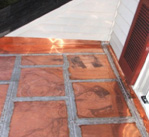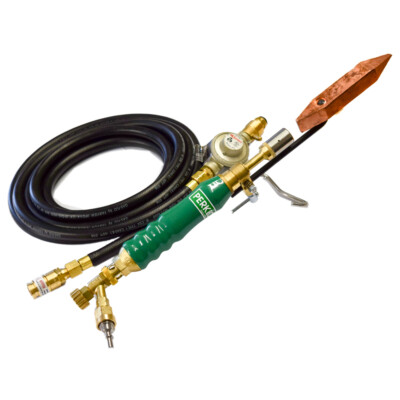Whether you have been soldering for quite some time or you’re a complete novice, having a basic understanding of the types of solder commonly used for roofing is important to make sure you achieve your best installation every time.
NOTE: This blog can serve as a guide for a better understanding of the process. Always refer to your metal supplier for recommendations on what types of solder and flux to use before you make final decisions.
3 Common Roofing Solder Types
 50/50 – 50% Tin / 50% Lead
50/50 – 50% Tin / 50% Lead- 60/40 – 60% Tin / 40% Lead
- Tin Solder (lead free) – 96% Tin / 4% Silver (or copper)
What is the difference in performance?
You need not be a chemist to understand the difference in these solders. You should however, understand that the solders will start to melt at a specific temperature and will fully become liquid at a different temperature. The difference in temperature between these two states (solid & fully liquid) is known as the “pasty range”. The larger the “pasty range”, the longer the solder stays “workable”. Below are the main features that accompany each solder alloy.
 50/50 Solder – The most common solder in the roofing trade. The working temperature range of the solder is large which means that is easily workable for someone new to the task. The bead will be strong and will lay flatter meaning easier sweating of joints. The cost is reasonable and the solder is readily available in stores and online for purchase
50/50 Solder – The most common solder in the roofing trade. The working temperature range of the solder is large which means that is easily workable for someone new to the task. The bead will be strong and will lay flatter meaning easier sweating of joints. The cost is reasonable and the solder is readily available in stores and online for purchase
- 60/40 Tin/Lead Solder – Has a slightly higher composition of tin in the alloy. More tin = higher tensile strength. A higher tensile strength means a stronger bond. While 60/40 is going to be a stronger bond, it is more difficult to work with due to a smaller “working temperature range” of the solder. This also means that while stronger, the bead will want to be slightly rounder. 60/40 solder is recommended for use with any lead coated metals.
- Pure Tin Solder (Lead Free) – An alternative to soldering with lead based solders. In 1986, the Safe Drinking Water Act Amendments established that solders and fluxes used for water distribution systems could contain no more than 0.2% lead. There is reason to believe that restrictions may continue to be placed on the construction industry moving forward. Tin soldering will require practice for the tradesman as the lead in the 50/50 solder reduces the surface tension and makes the solder more “flowable”. Tin (lead free) solder is more expensive and harder to work with, but may be gaining popularity for good reason.









I have never seen the 96/4, But I have used sn97/cu3 it is the preferred solder for stainless steel.
As with Ben, we have been using 97sn/3cu solely, since 2008. We used pure tin solder with TCSII panels installed around 2006 and had a bear of a time getting used to the tendency of that solder to simply bounce between being liquid or solid…
Garrett